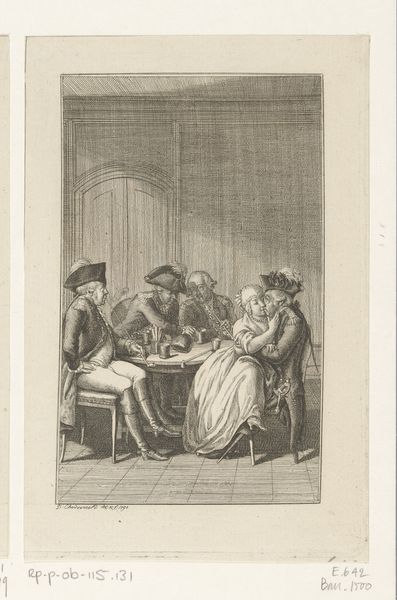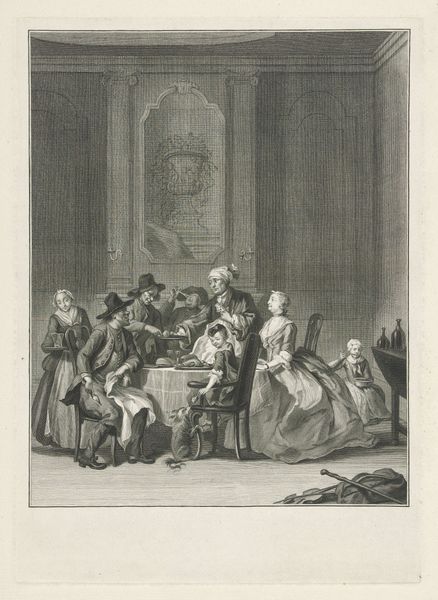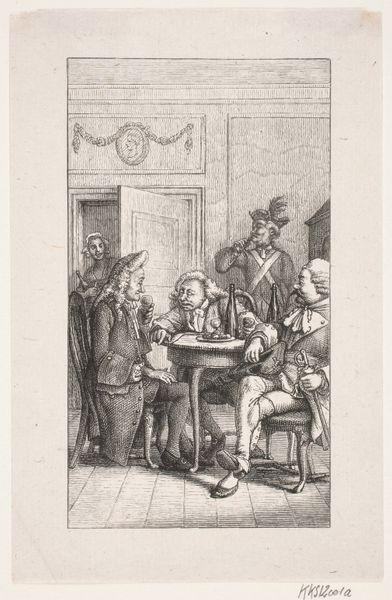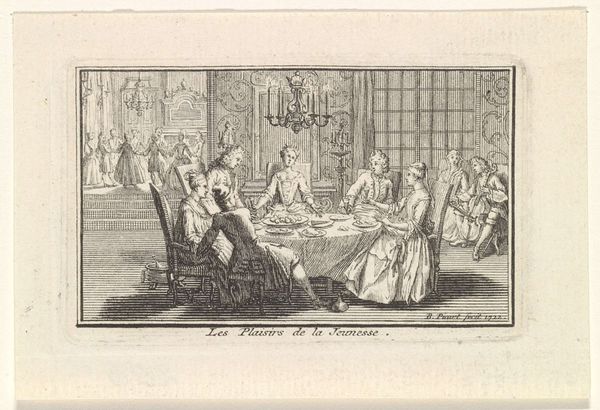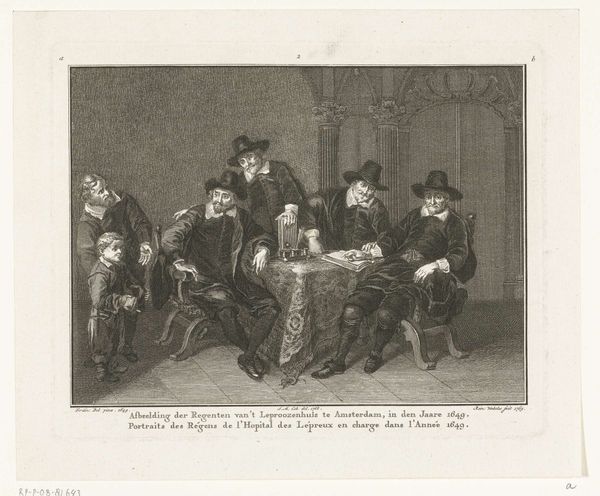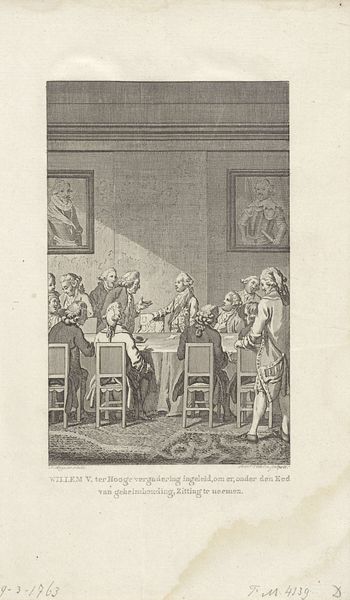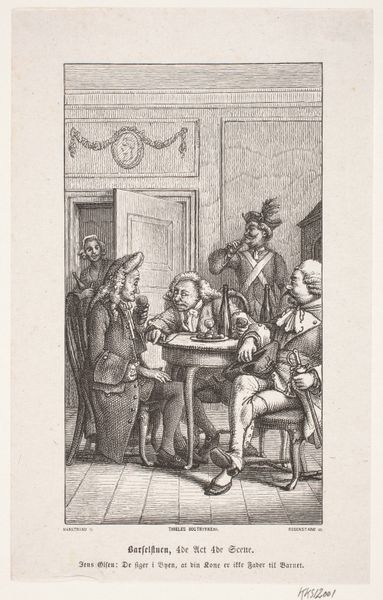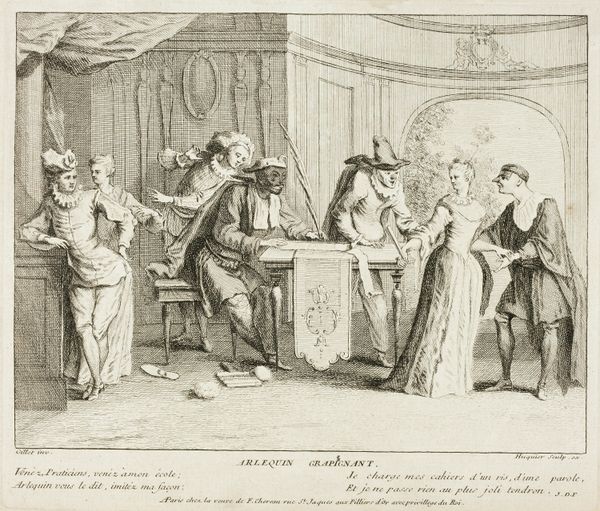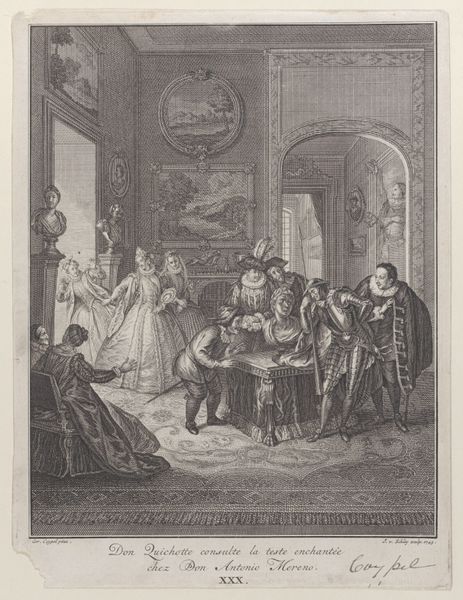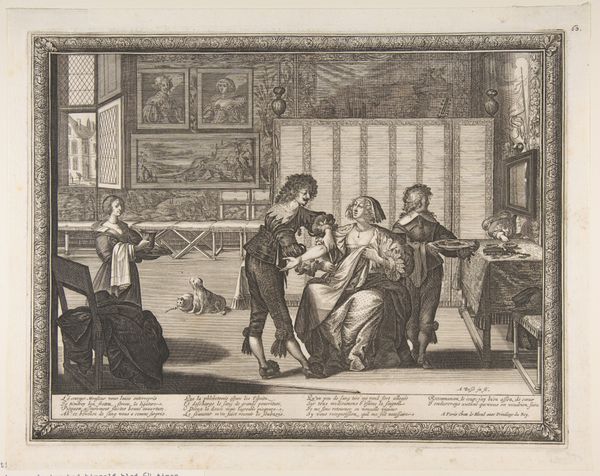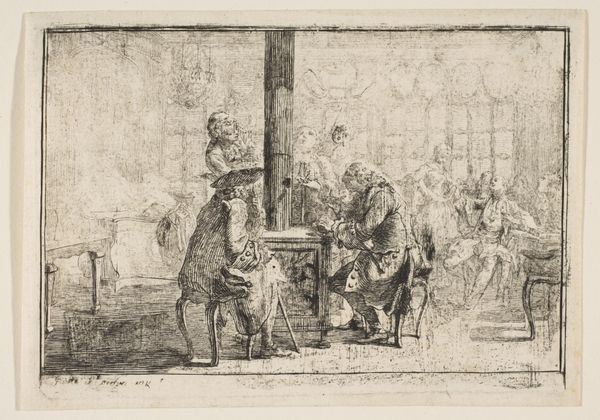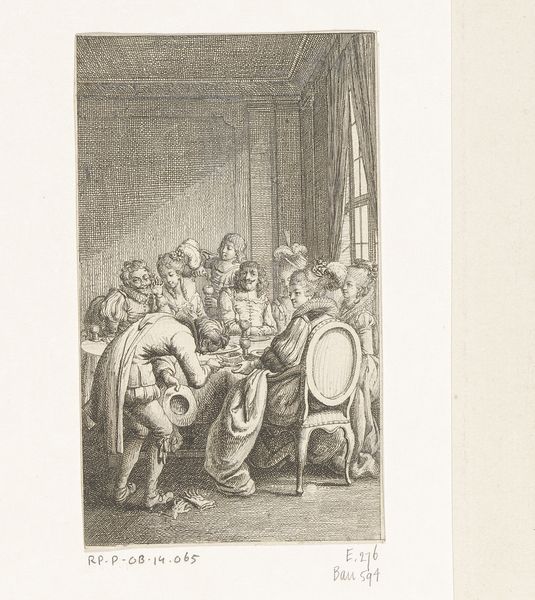
Dimensions: height 168 mm, width 207 mm
Copyright: Rijks Museum: Open Domain
Curator: What strikes me first is the…weight of responsibility hanging in the air. They look like they're counting their losses or planning for more, it makes me a bit anxious, what about you? Editor: Indeed, the air of somber contemplation is hard to miss. We are looking at "Regenten van het Leprozenhuis in Amsterdam" a Baroque engraving created around 1769 by Reinier Vinkeles. It’s currently held at the Rijksmuseum. Curator: Leprosy was terrifying for centuries… a scourge. What's interesting is how Vinkeles shows not the suffering directly, but rather the administration around it. The unseen presence looms heavily over this portrait. I like the man and boy seemingly outside of the closed circuit on the right though, they feel a little less… stiff, somehow, even though the subject matter itself must be awful. Editor: Yes, and in focusing on the regents, Vinkeles presents a concentrated study of civic duty—or the performance of it at least. The book, the table, the serious faces. Every aspect reinforces that theme. The image seems staged, don't you think? Not only the expressions, but also the architectural features. Curator: Very much so! Notice how Baroque elements such as the heavy ornamentation of the pilasters evoke an atmosphere of authority? It places the scene within a larger, historically weighty context—lending greater import to this solemn gathering of the governors in contrast with those cast outside, to the side. Editor: And those stark contrasts are enhanced by the engraving itself: that commitment to capturing precise details and shading emphasizes the depth and gravity that you’ve mentioned before. There is also the implication, considering that the disease at hand here is leprosy, the sense of purity of their work against corruption. The way that Baroque paintings of the time approached that motif also comes to mind: is it really possible to maintain inner virtue? Curator: It certainly makes you wonder. This wasn't simply an administrative gathering, this was an engagement with suffering. Even now, those historical anxieties, still clinging to these marks…! They remind us that institutions, like the individuals who populate them, are never purely objective—they are interwoven with moral tensions and human concerns. Editor: This brings to the fore the deep interplay of civic responsibility, public health, and personal ethics.
Comments
No comments
Be the first to comment and join the conversation on the ultimate creative platform.
